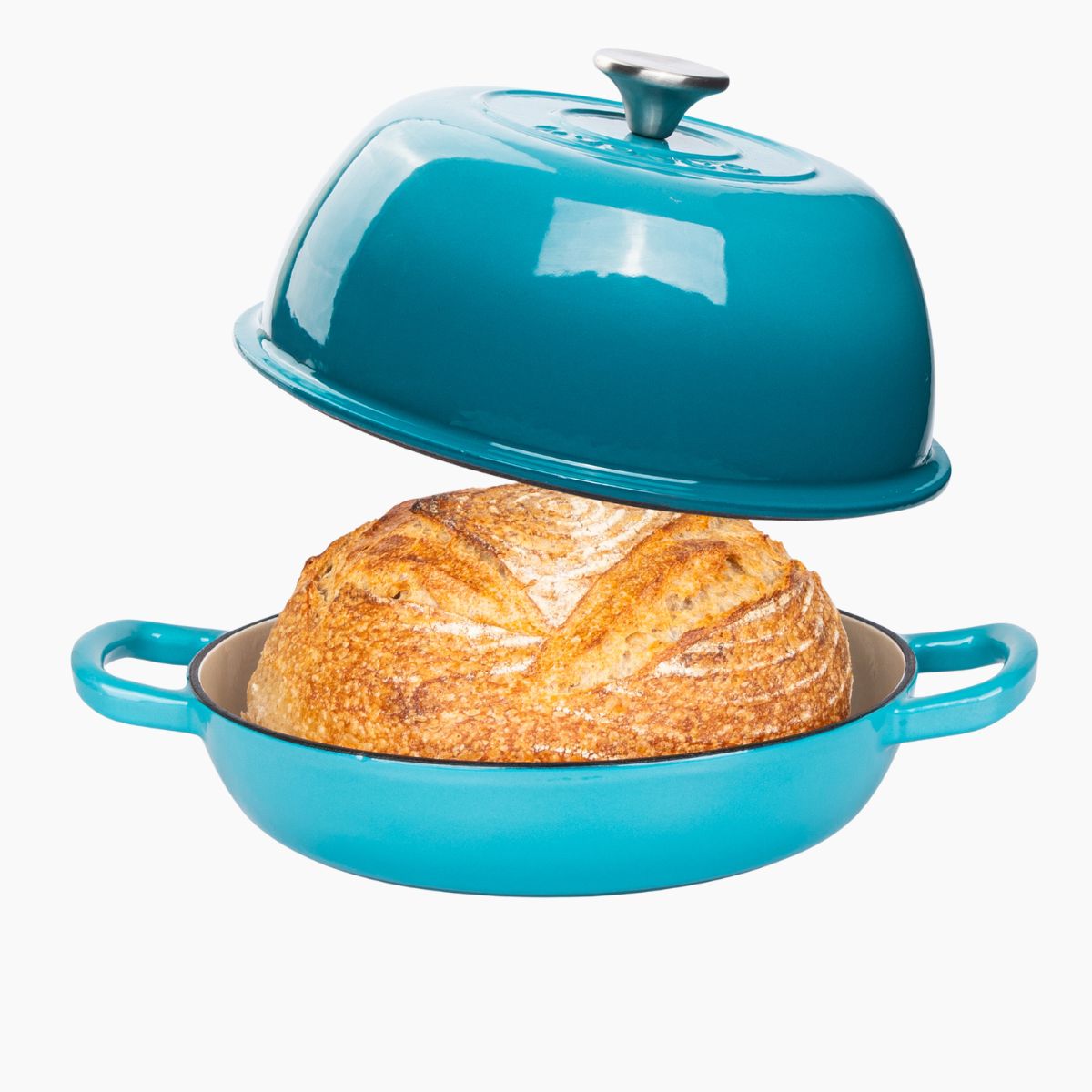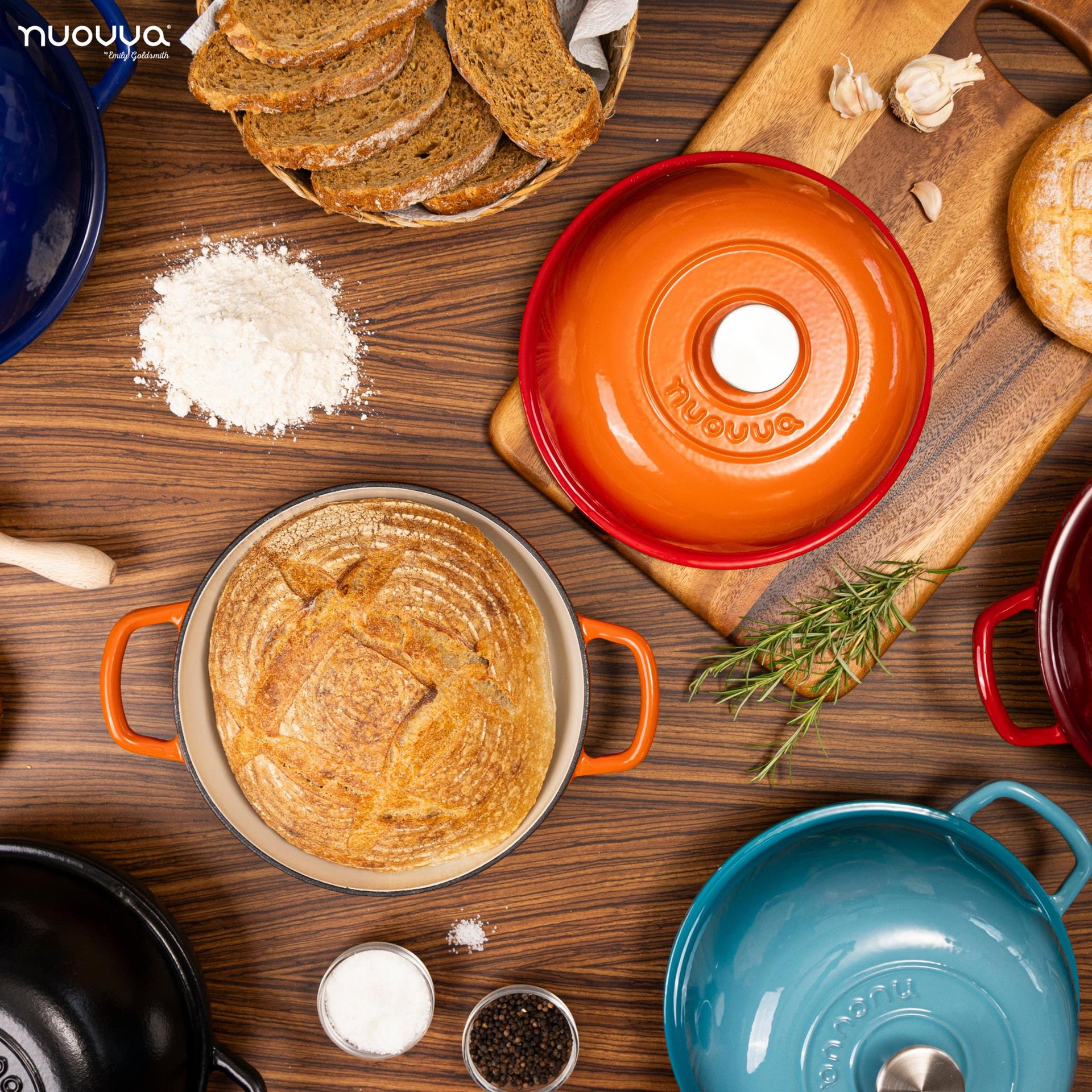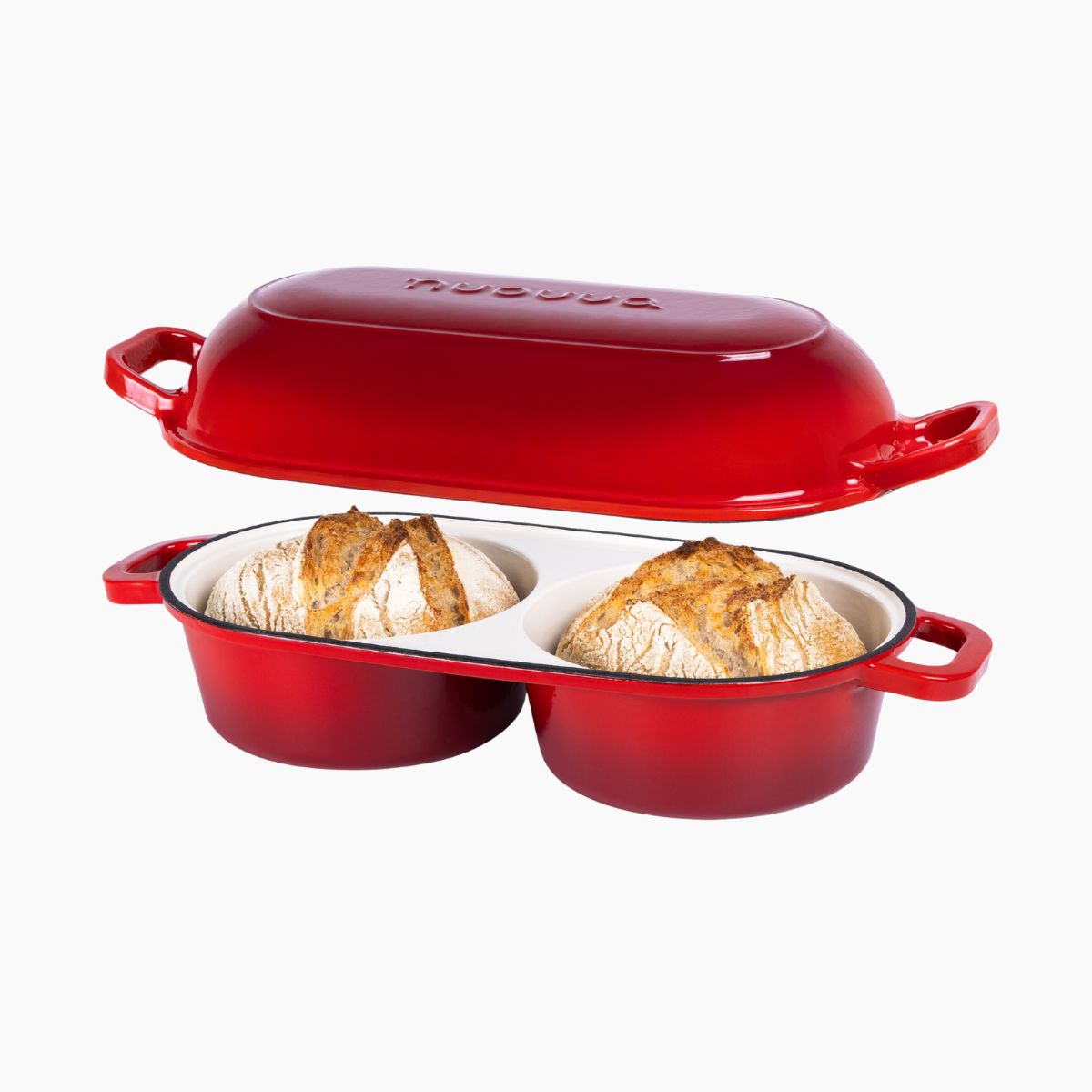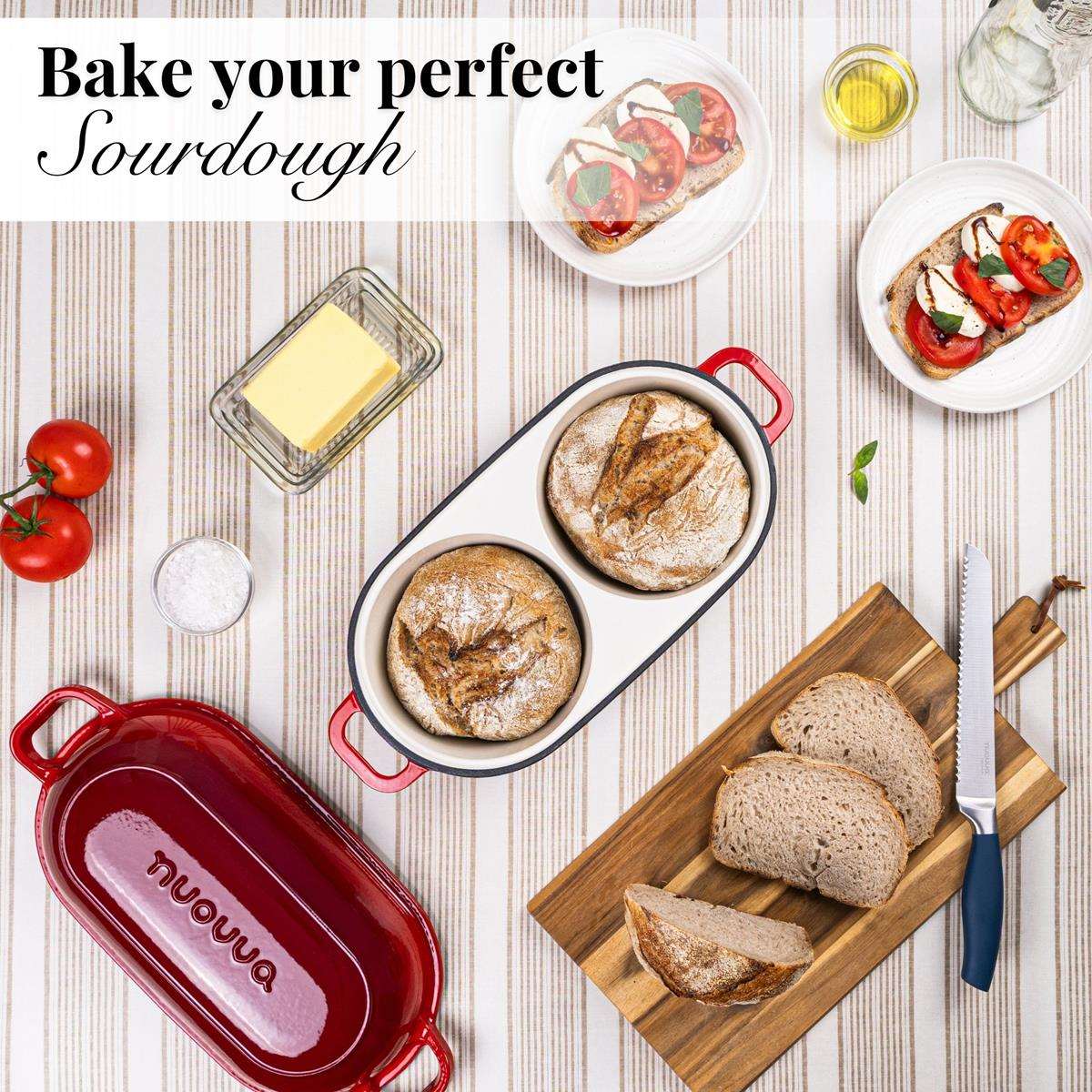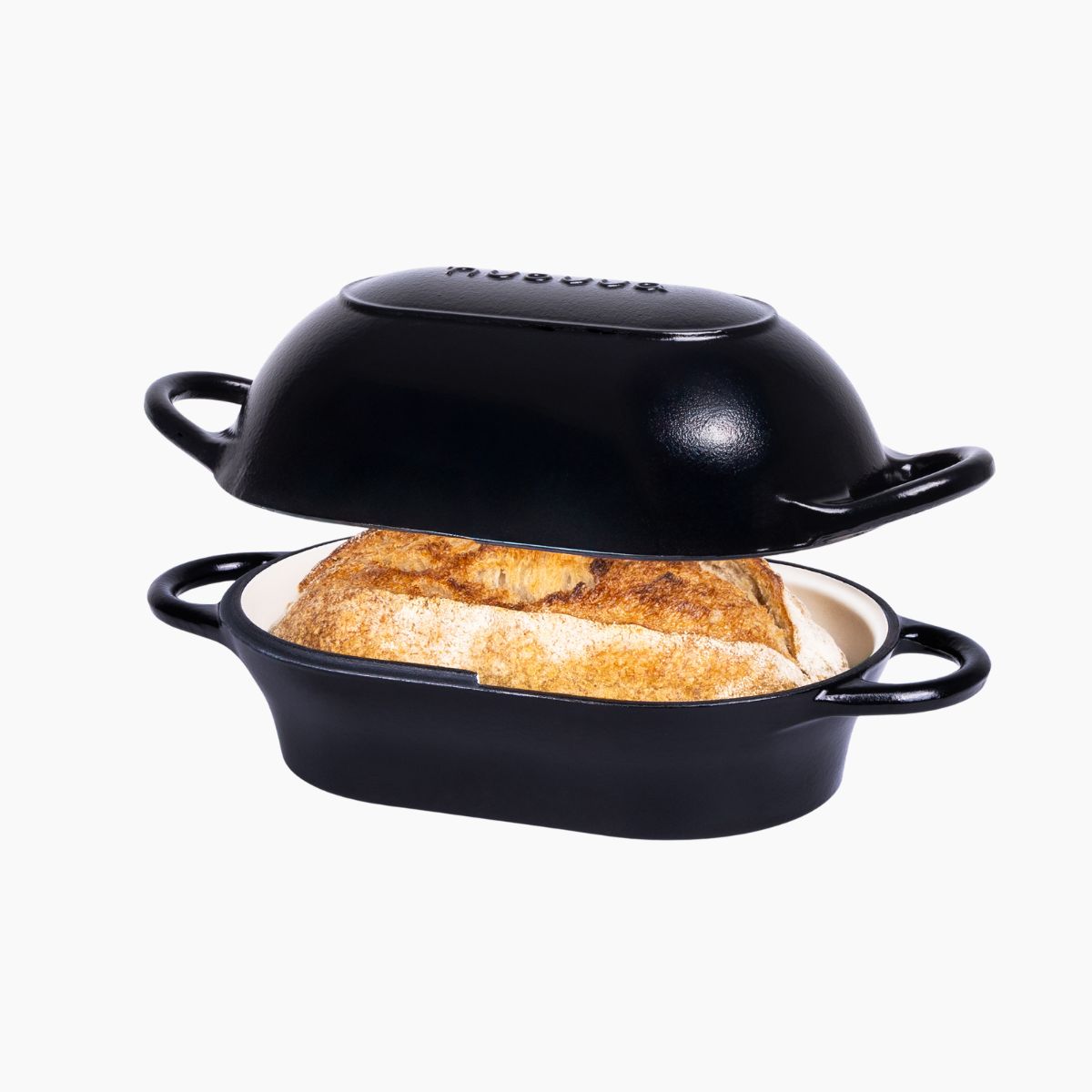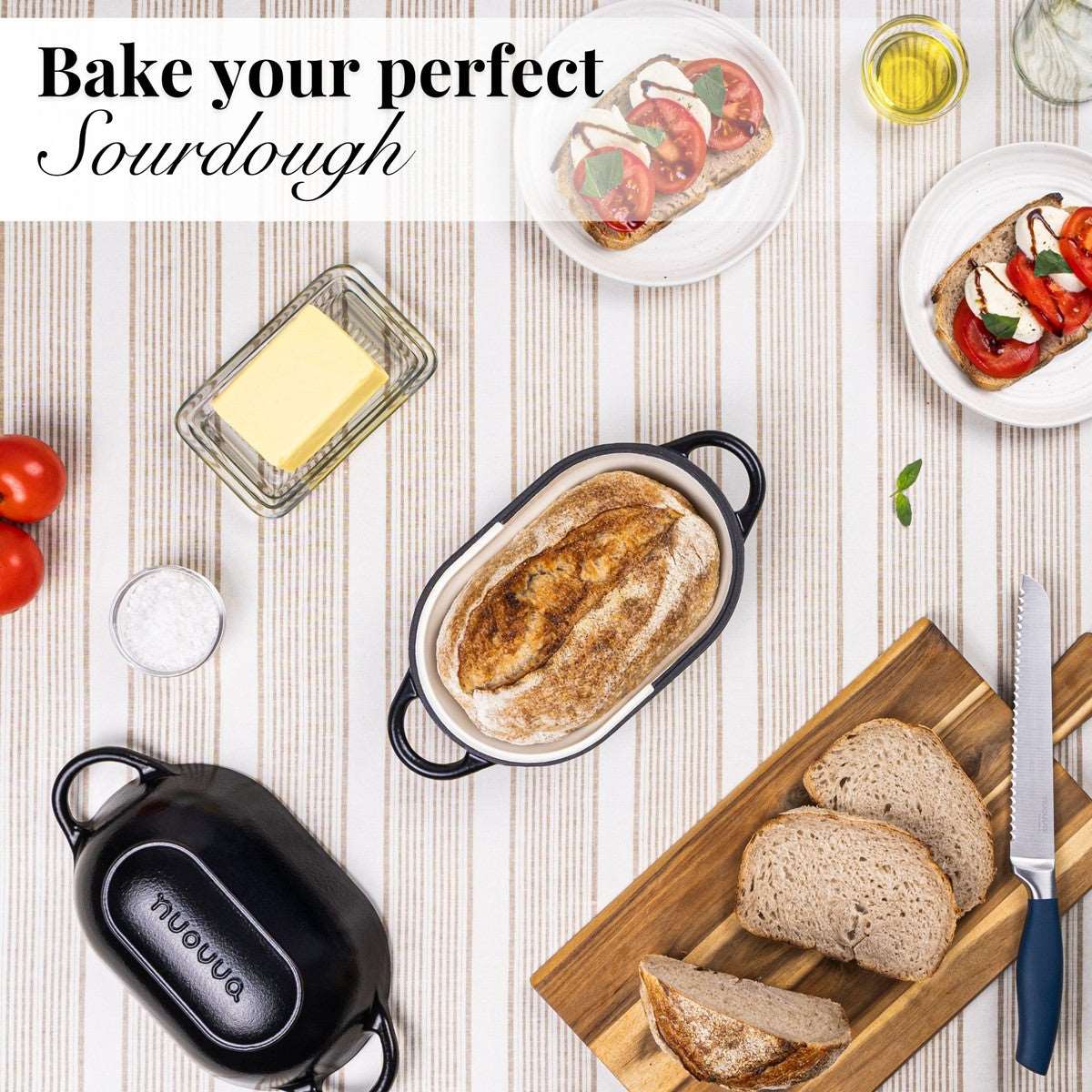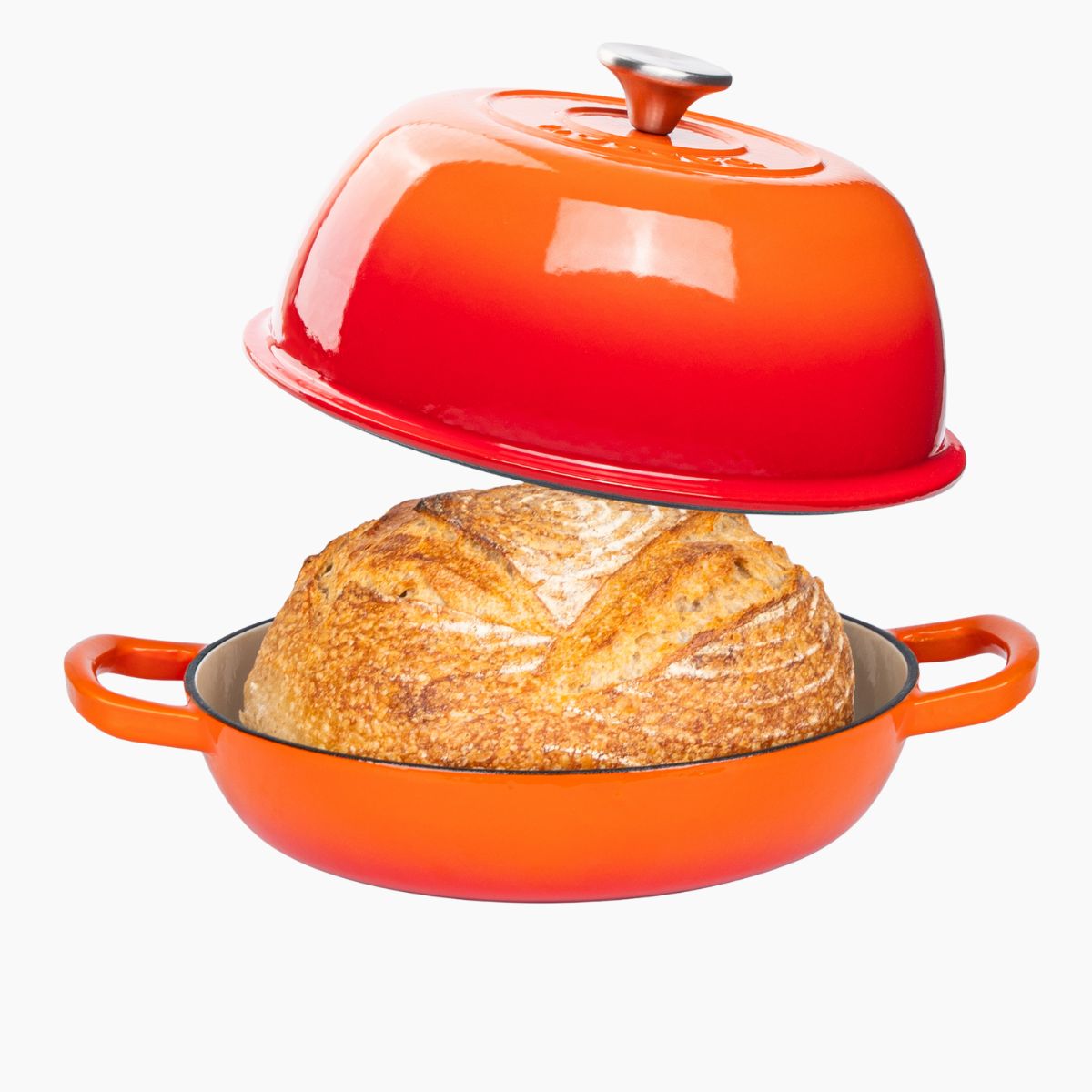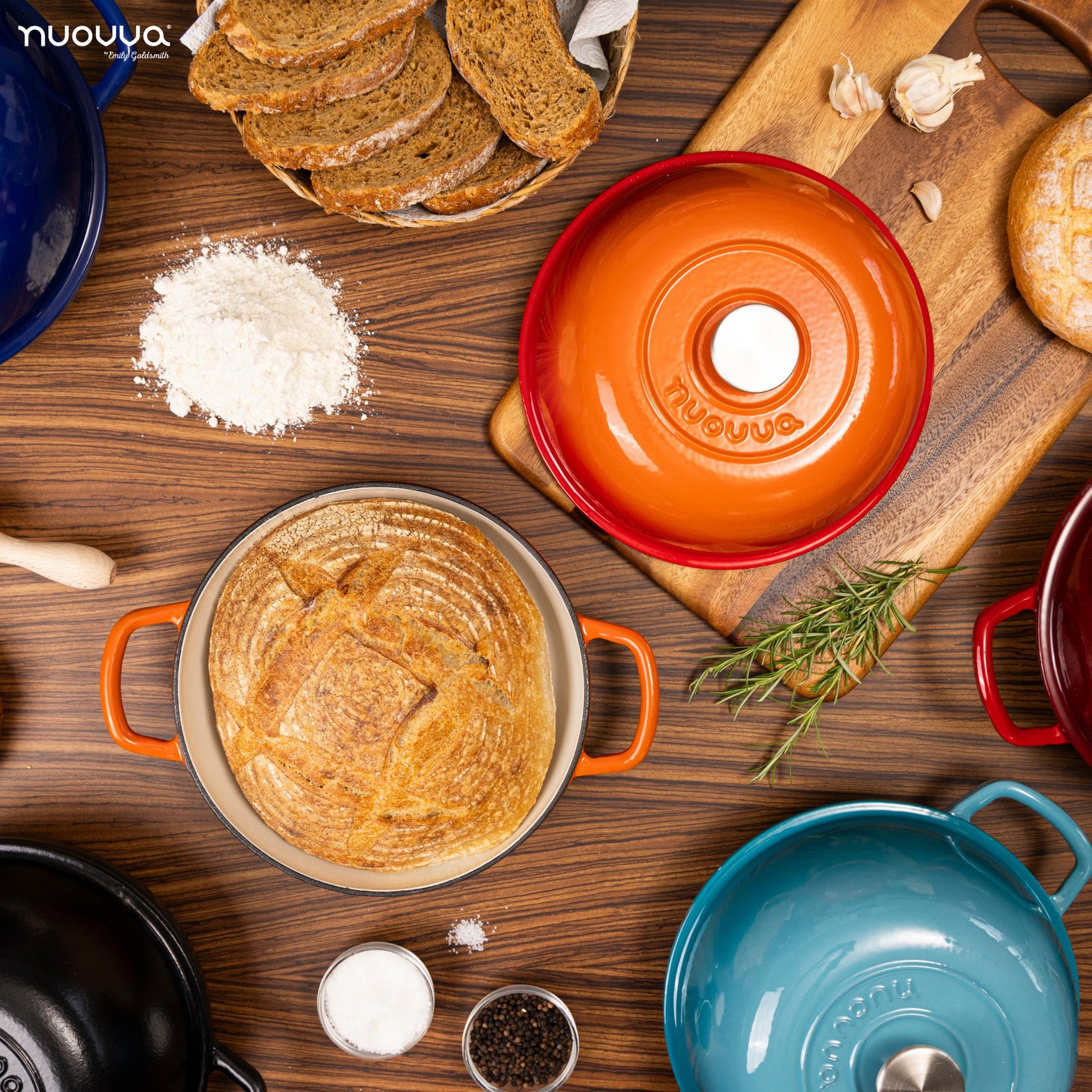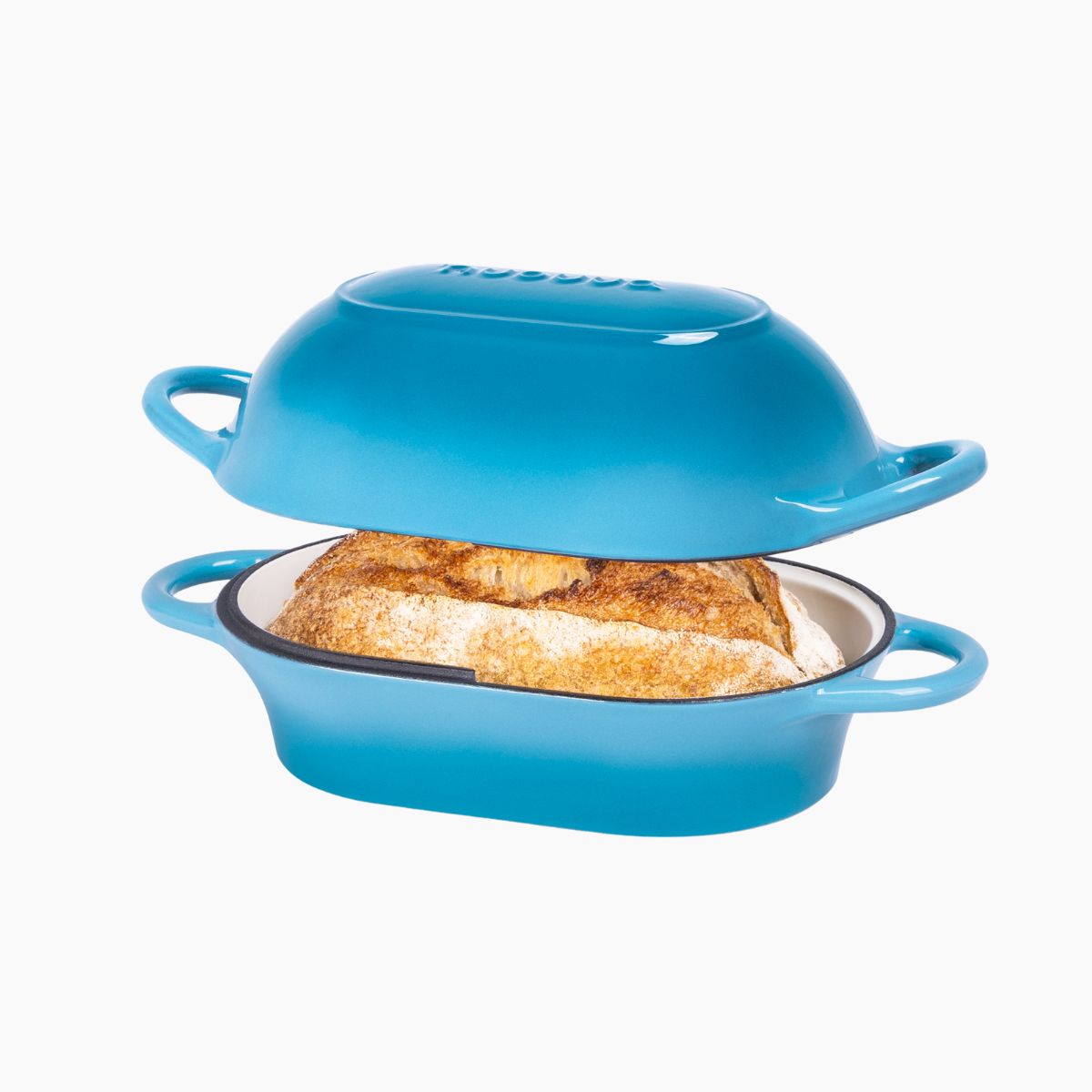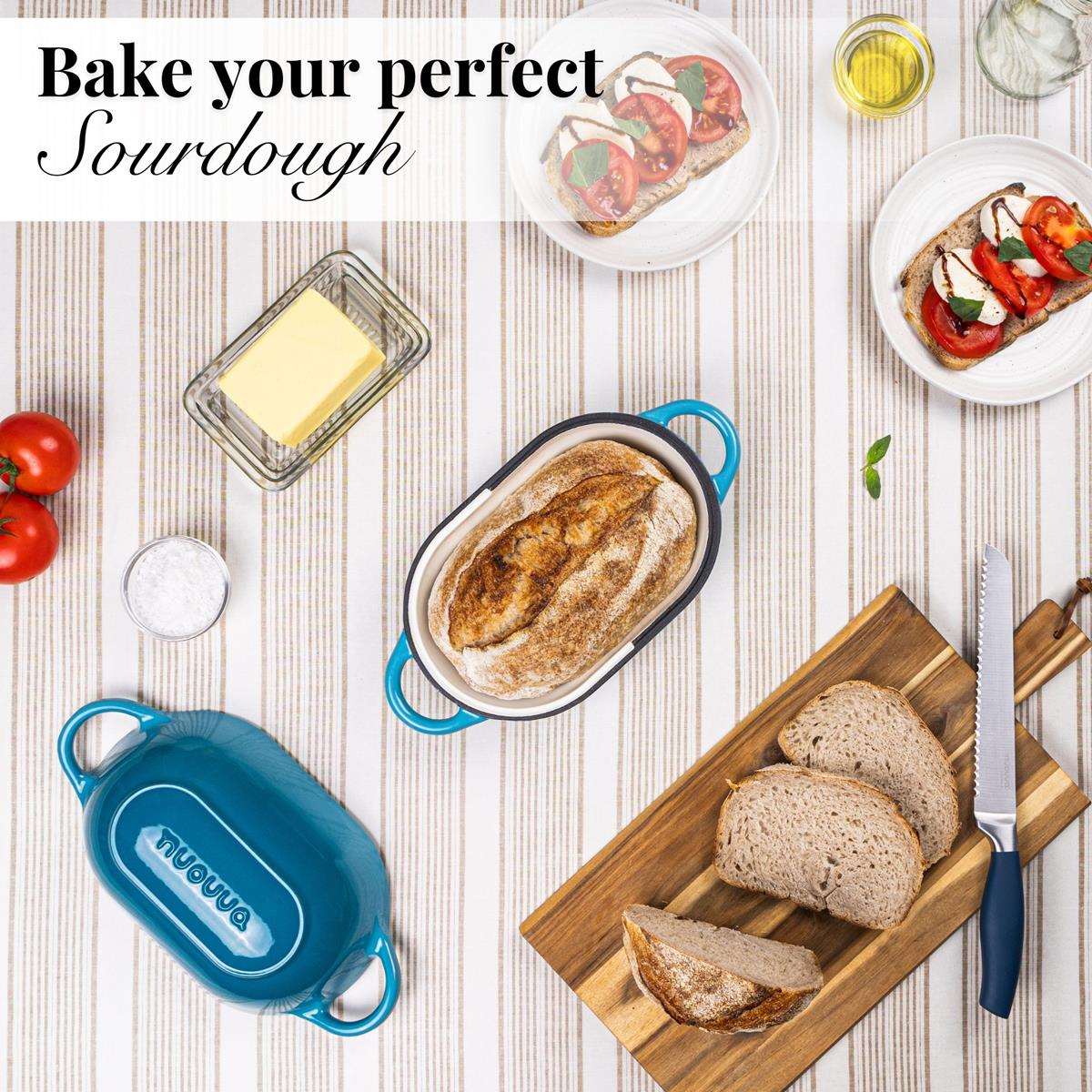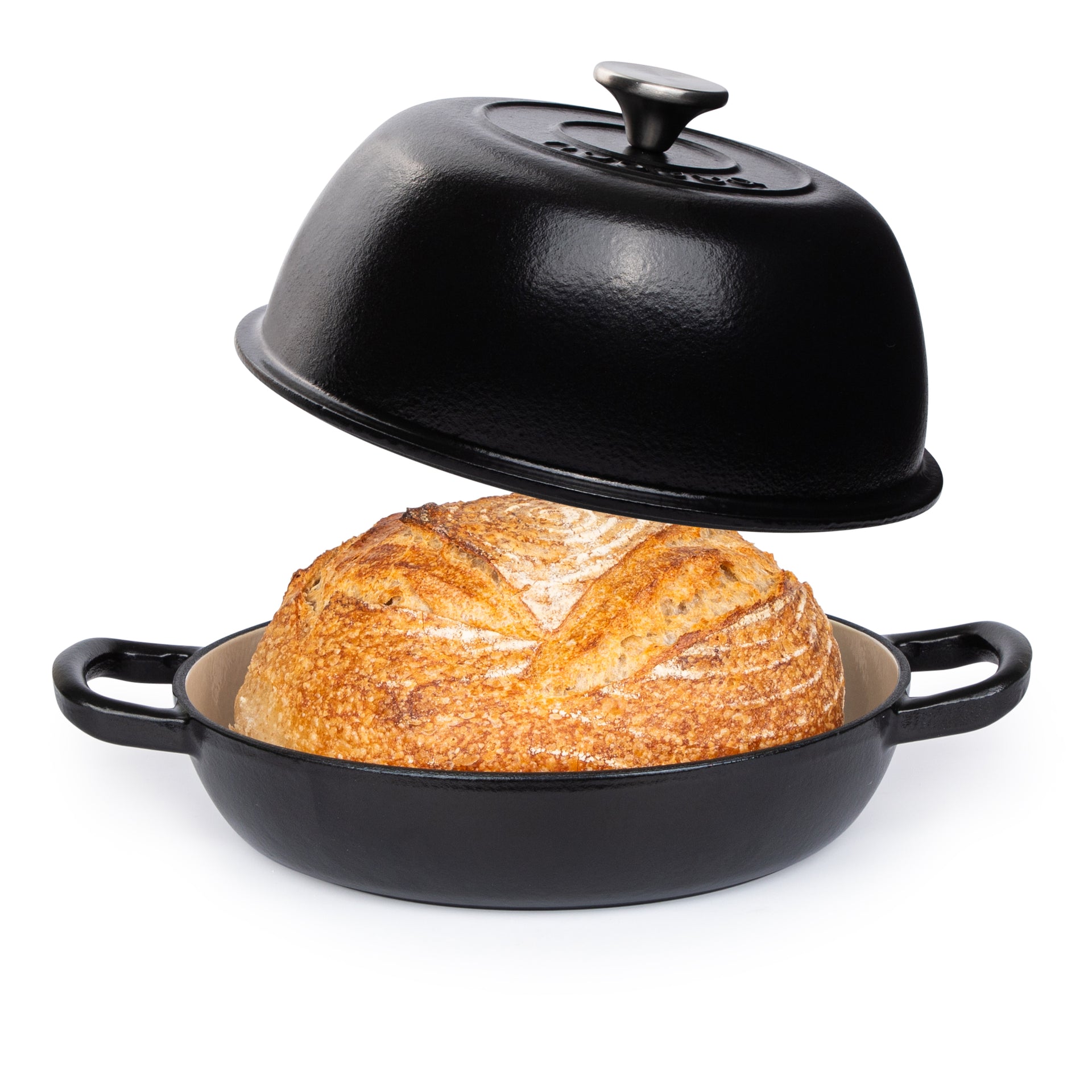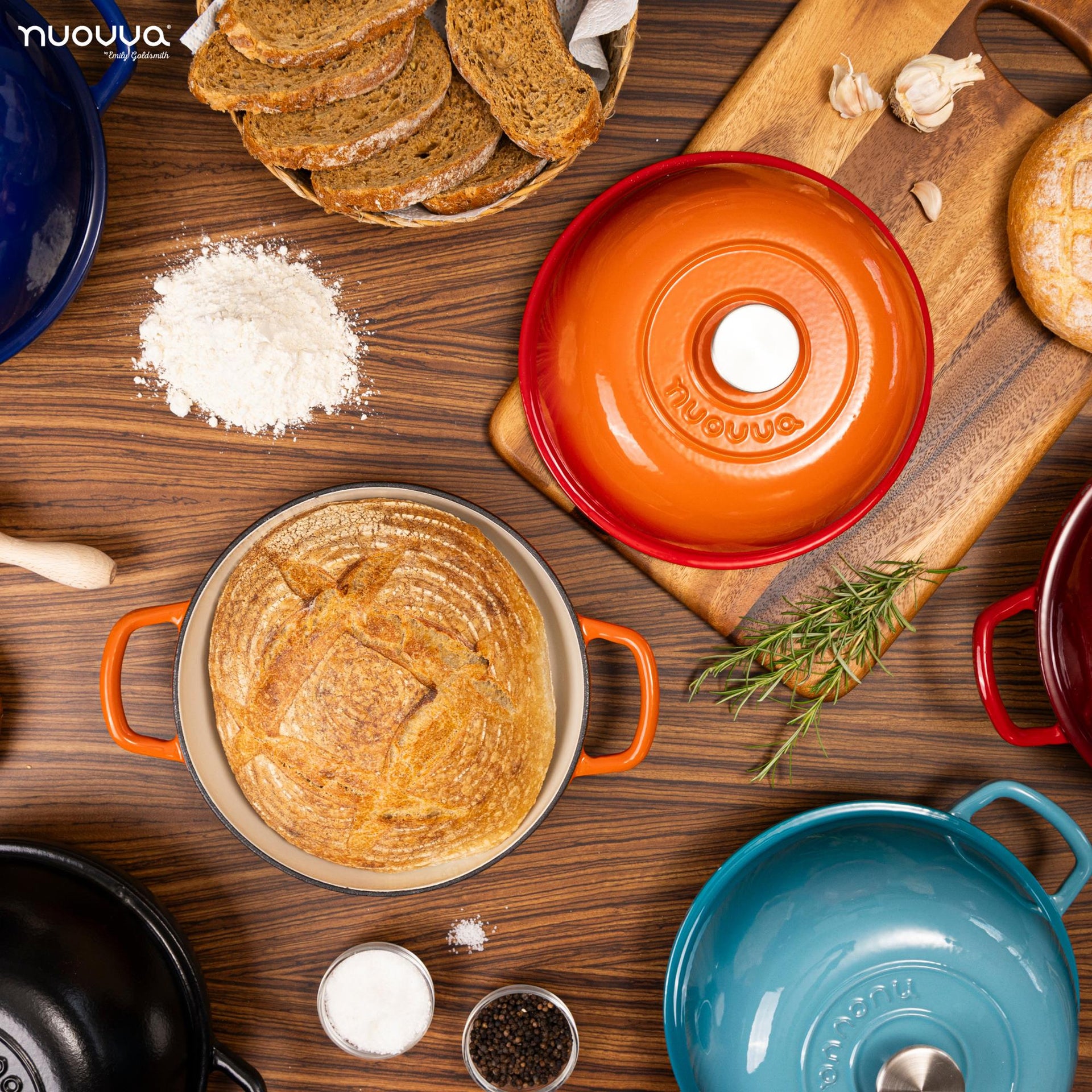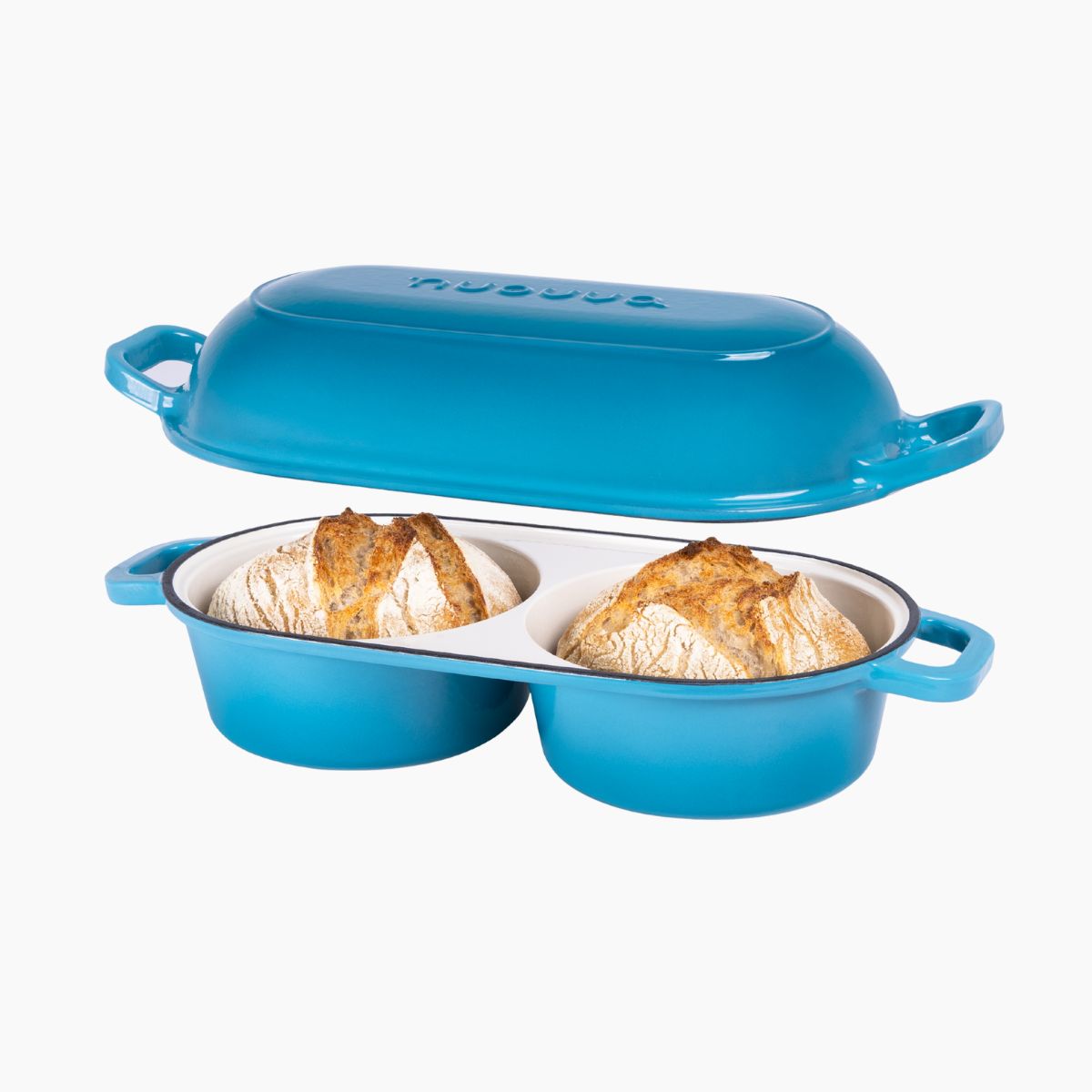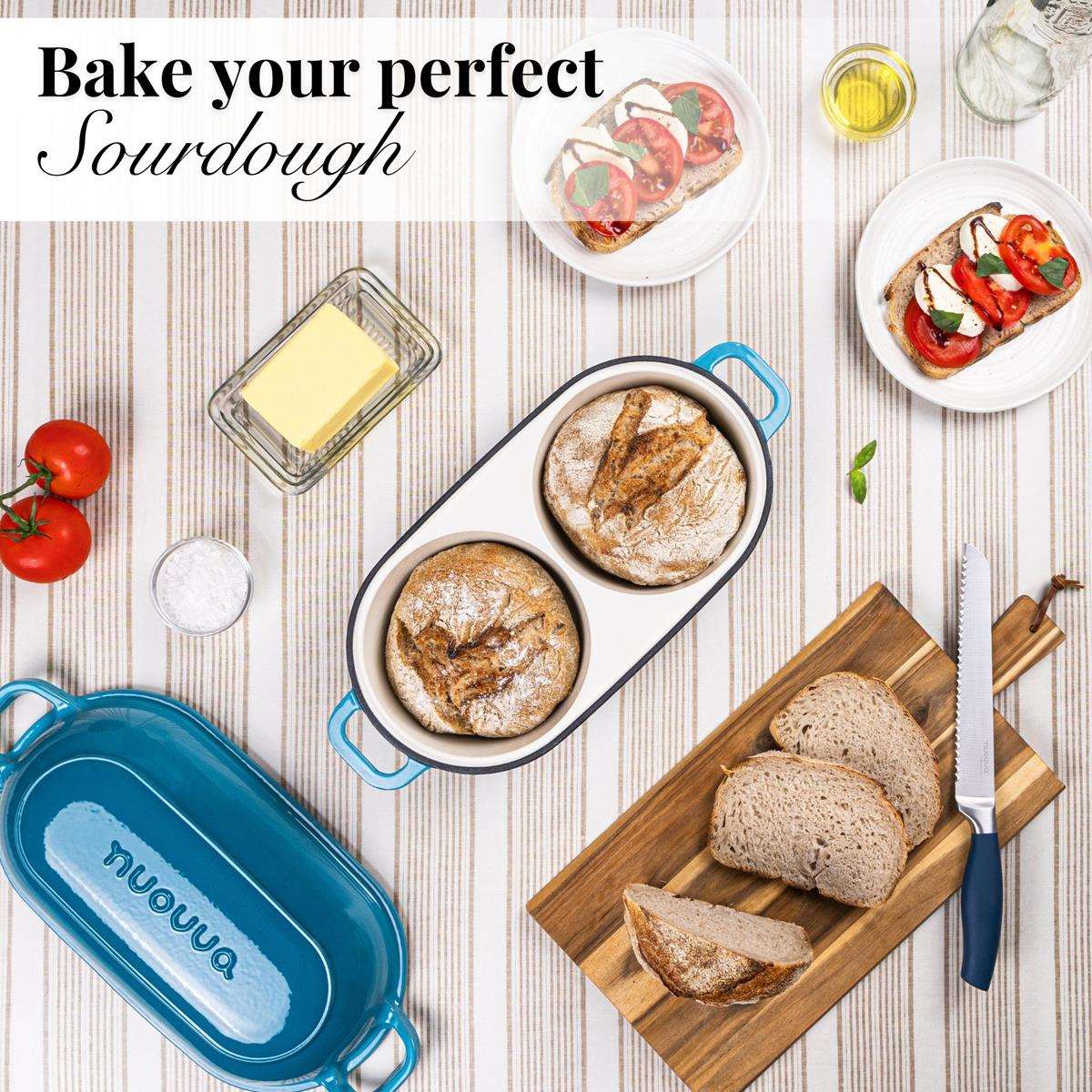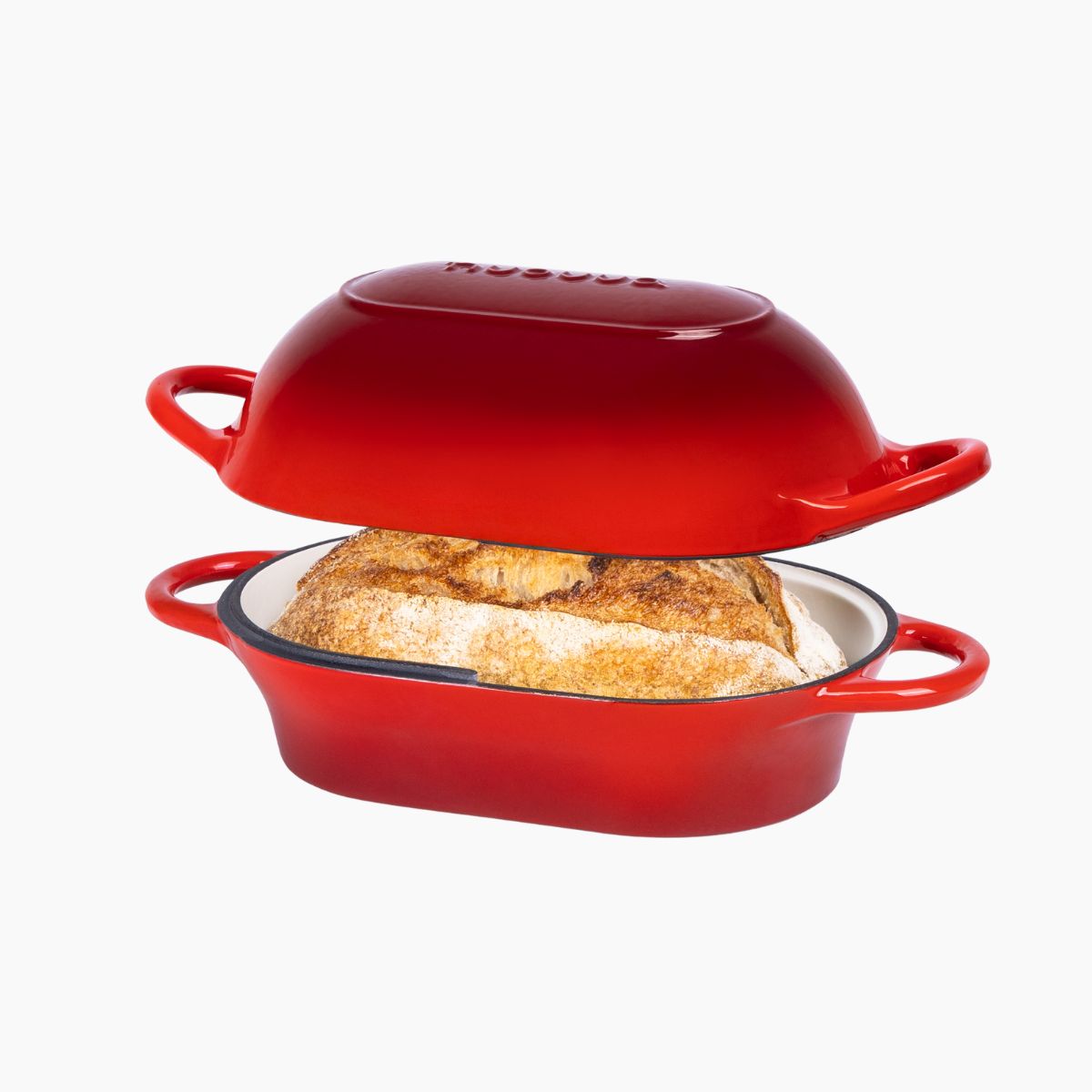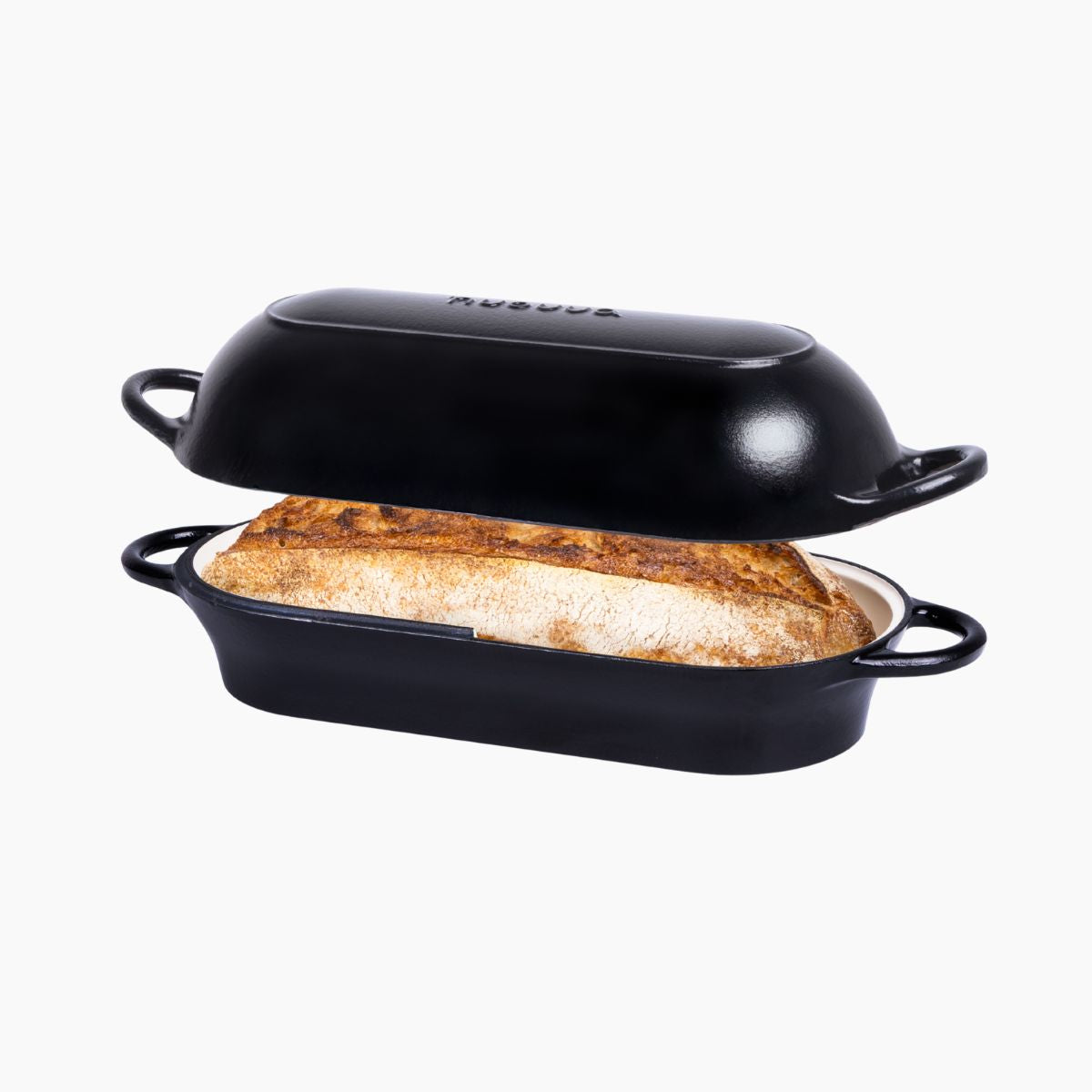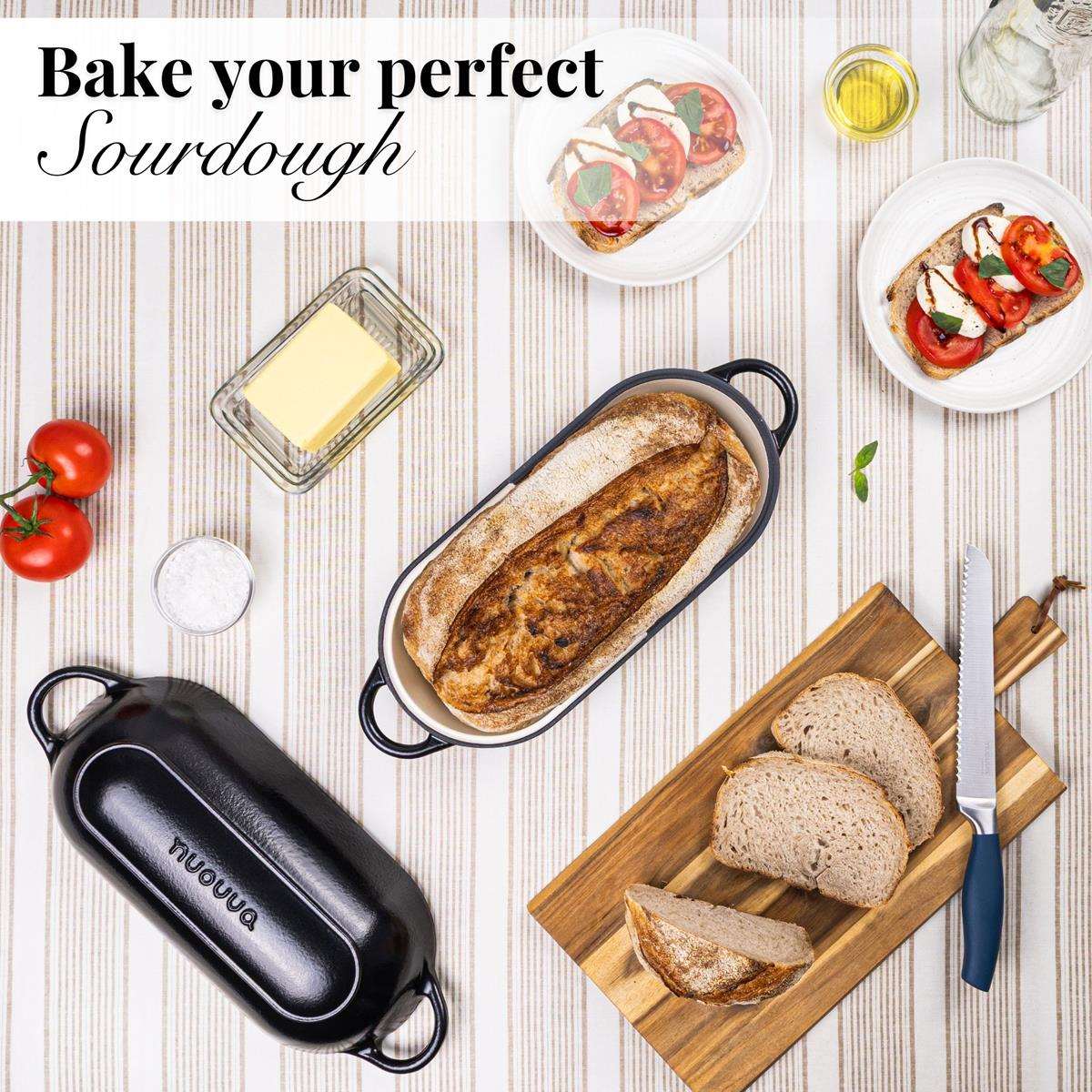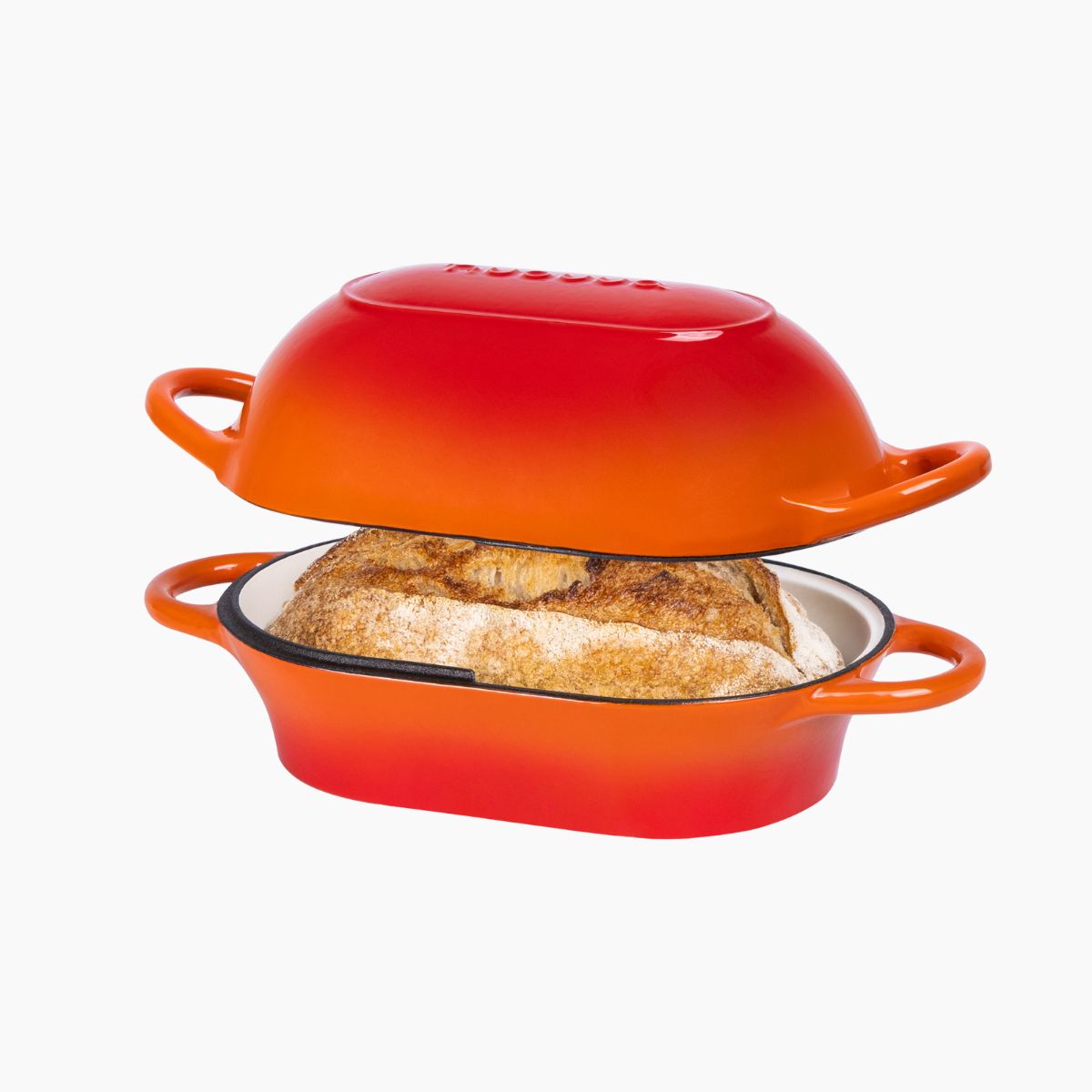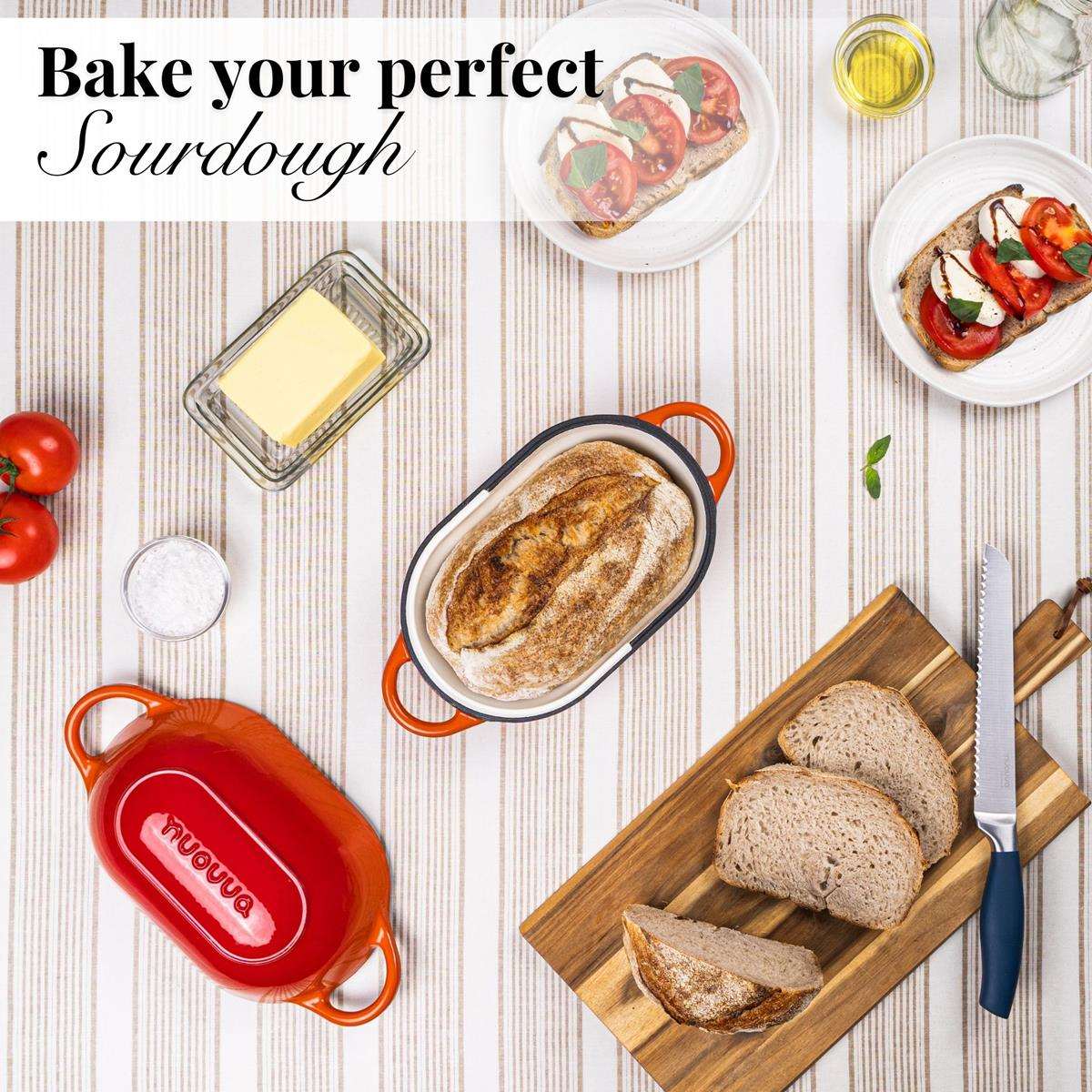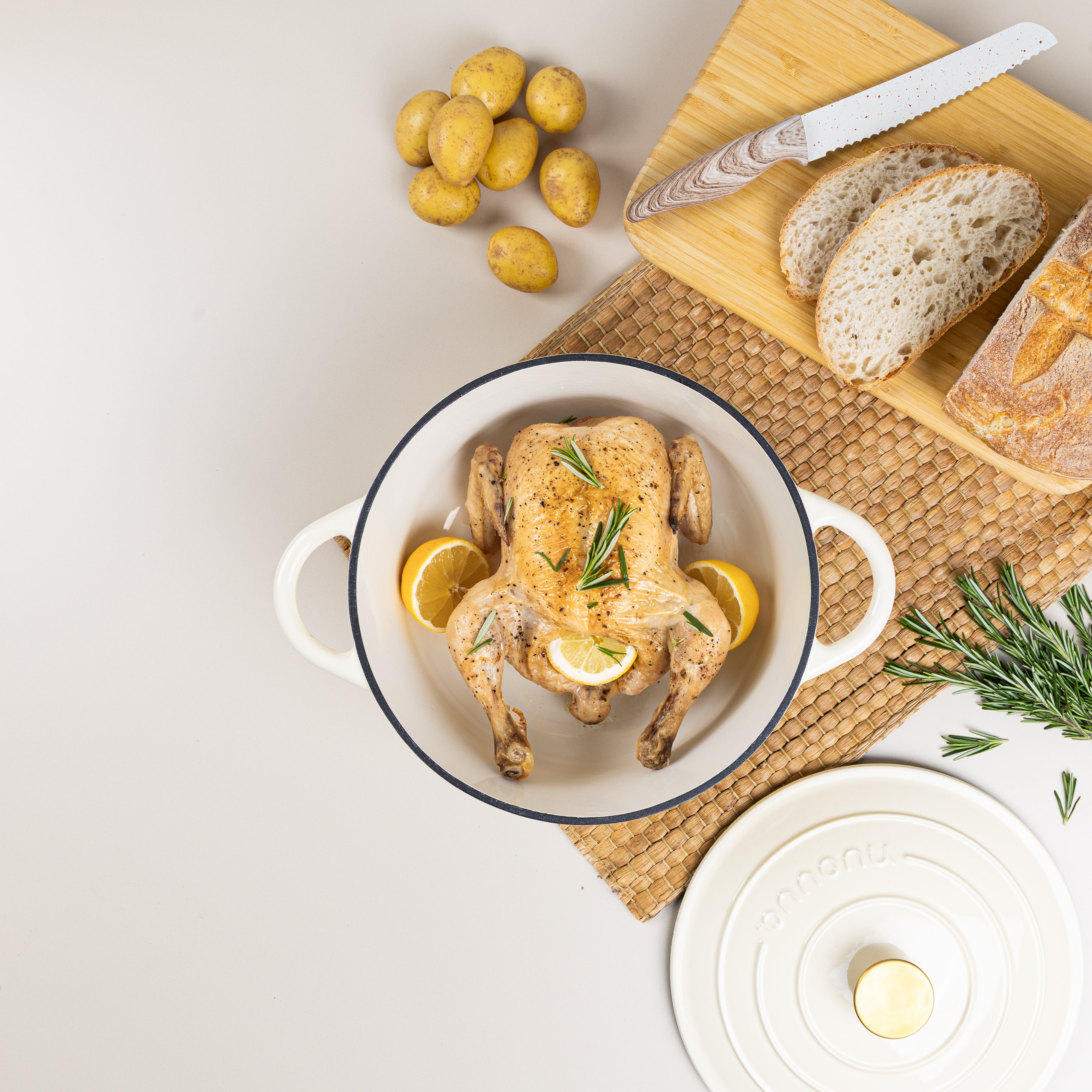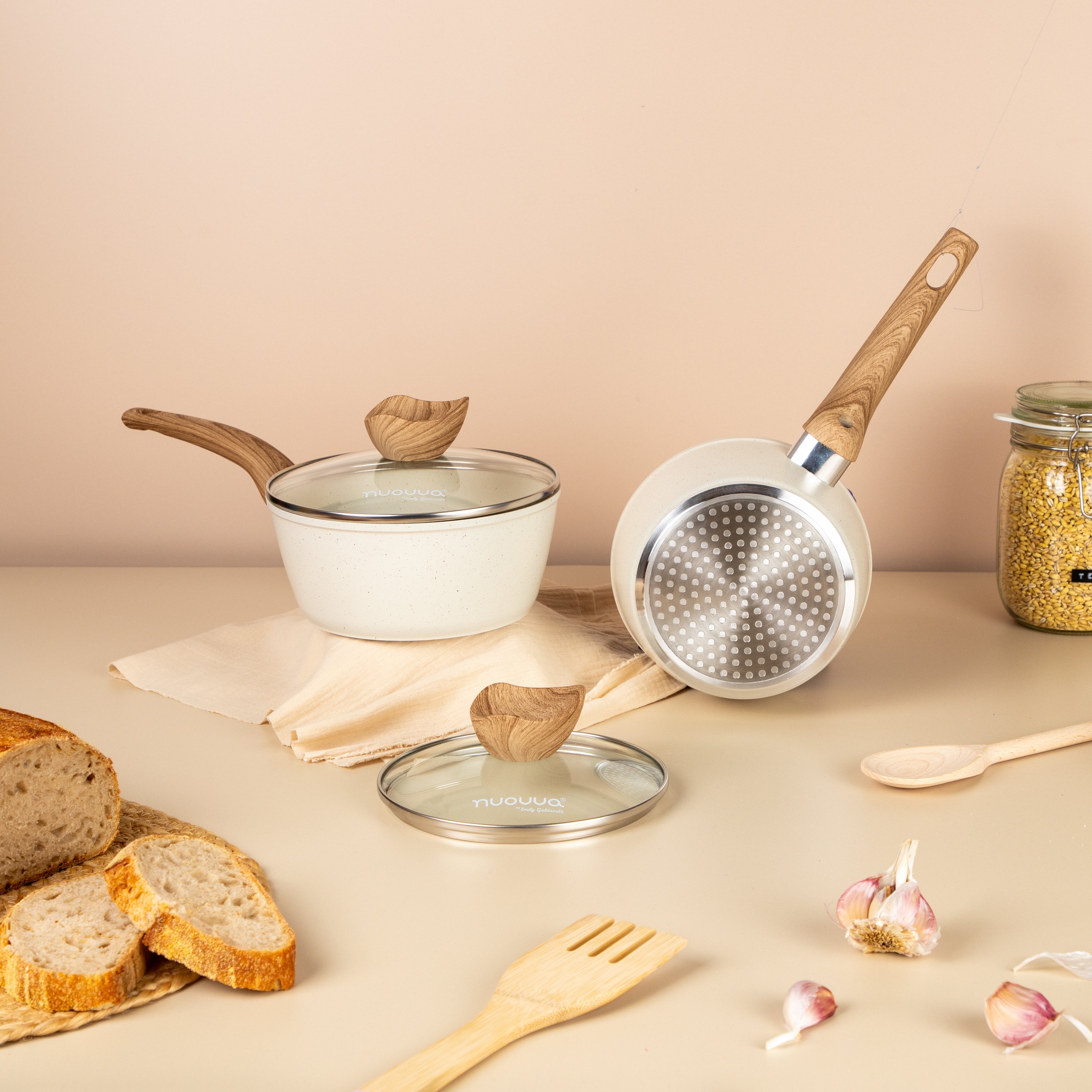This is the recipe we bake in our own kitchens — balanced, approachable, and crafted for better bread.
At Nouvva, we believe great food begins with simple ingredients, patience, and the right tools. Curated over years by our founder, Emily Goldsmith, this sourdough is a celebration of slow living and everyday craft — perfect for your very first loaf or your fiftieth.
It’s also why we created the Nouvva Cast Iron Bread Pan — engineered to lock in steam, hold intense heat, and deliver the crisp crust and open crumb that define true artisan sourdough. Built for the ultimate sourdough experience, it transforms a simple recipe into bakery‑quality bread at home.
Now for the part you’ve been waiting for — the bake...
Ingredients:
- 500g white bread flour
- 300g filtered water
- 150g active starter
- 10g salt
Tools You Will Need:
- Nuovva Dutch Oven
- Nuovva Bread Baking Kit
- Danish Whisk
- Dough Scraper
- Rattan Proofing Basket
- Fabric Bread Cloth
- Silicone Bread Sling
- Bread Knife
- Kitchen Scale
- Large Mixing Bowl
Directions:
Step 1) Feed your sourdough starter 4–12 hours before mixing your dough by combining equal parts flour and water (e.g. 50g each). Let it sit at room temperature until it becomes bubbly, rises in the jar, and passes the “float test” - a small spoonful dropped into water should float. This means your starter is active and ready to use.

Step 2) In a bowl, combine the sourdough starter and water, mixing well. Add the flour and salt, then stir until a shaggy dough forms. It’s normal for the dough to feel a little sticky at this stage.

Step 3) Every 30 minutes, perform 4–6 stretch and folds by gently lifting one side of the dough and folding it over. Rotate the bowl and repeat on all sides. Keep the dough covered, and repeat this process 3–4 times over the course of 3 hours.

Step 4) Cover the dough and leave it to rise in a warm place for 5 - 16 hrs, depending on your room temperature. The dough is ready when it has roughly doubled in size and feels soft, smooth, and airy. You can gently press a floured finger into the dough - if the indentation springs back slowly, it’s fully proofed.

Step 5) Once the dough has finished rising, gently shape it into a round ball. Place it seam-side up into your floured Nouvva® banneton (or proofing basket), cover with a cloth, and place it in the fridge to cold-proof for 8 to 12 hours.

Step 6) When ready to bake, take the dough out of the fridge and gently turn it out onto the Nouvva® silicone bread sling. Score the top using the Nouvva® bread lame - one deep slash helps the loaf expand, and you can add extra cuts for decoration. Place the dough into a preheated Nouvva® Dutch oven. (Preheat the oven to 240°C for 30 minutes with the Dutch oven inside.)

Step 7) Bake at 240°C with the lid on for 20 minutes. Then remove the lid and bake for a further 20–25 minutes at 200°C, until the crust is deep golden. Once baked, remove the loaf using the sling and let it cool on a wire rack for at least 1 hour before slicing.
Scouring Ideas for Your Sourdough Journey
Scoring your sourdough is both an art and a science — it helps control how your bread expands and adds beautiful, unique patterns to your crust.
Here are some inspiring scoring styles you can try to make every loaf distinctly yours.

Tip: Always use your Nuovva® Bread Lame at a shallow angle (30–45°) for clean, confident cuts. Score just before baking, and don’t be afraid to get creative!
Your Complete Sourdough Kit Guide
Our detailed care and usage manual covers everything — from seasoning and cleaning your cast iron pan to tips for perfect bakes every time. Keep it handy for stress-free sourdough sessions.
Tip Box — Why Cast Iron Matters
Our cast iron bread pan locks in steam for the first 20 minutes of baking — the secret to a glossy crust and light, airy interior. It’s the same principle artisan bakeries use with steam ovens, now in your home kitchen.




